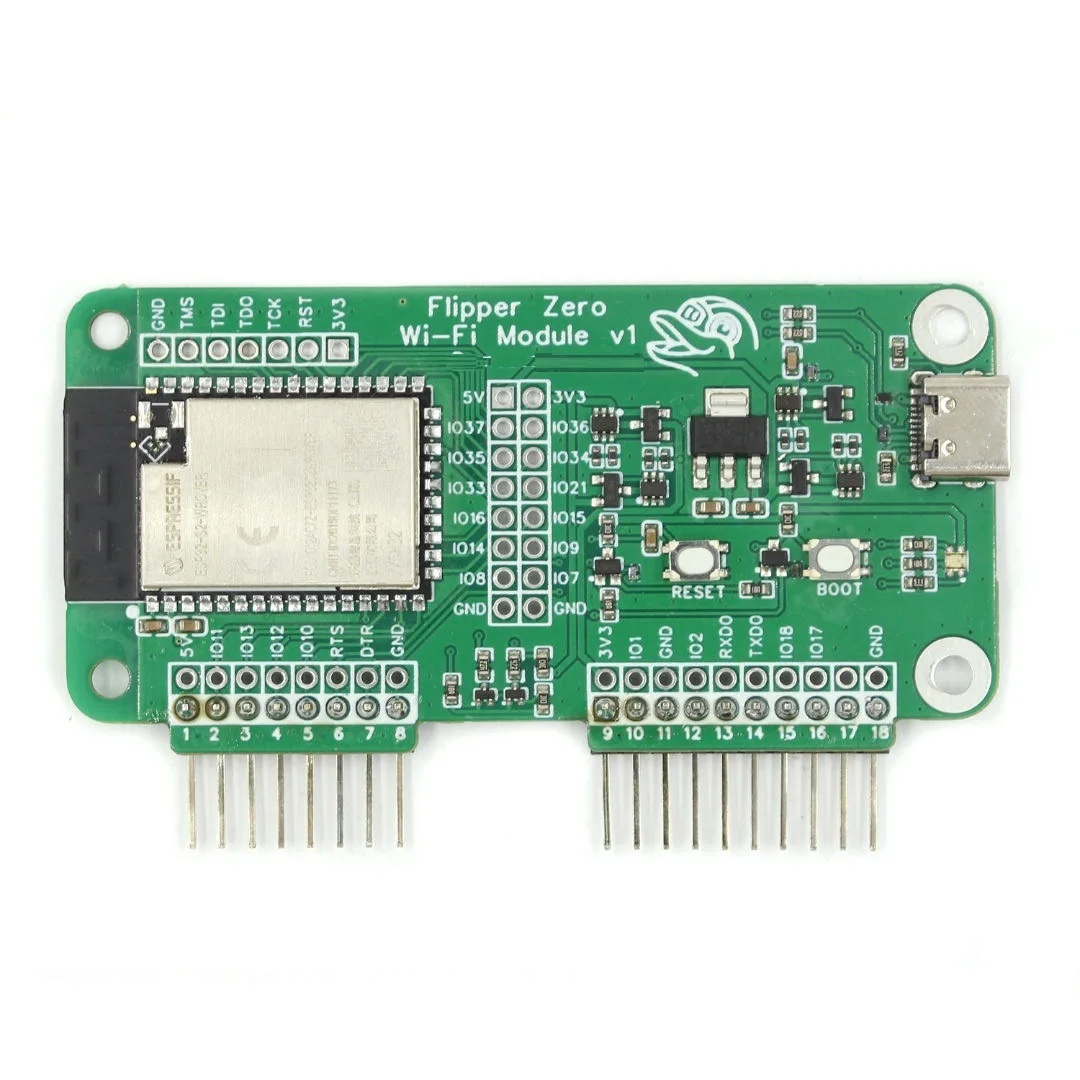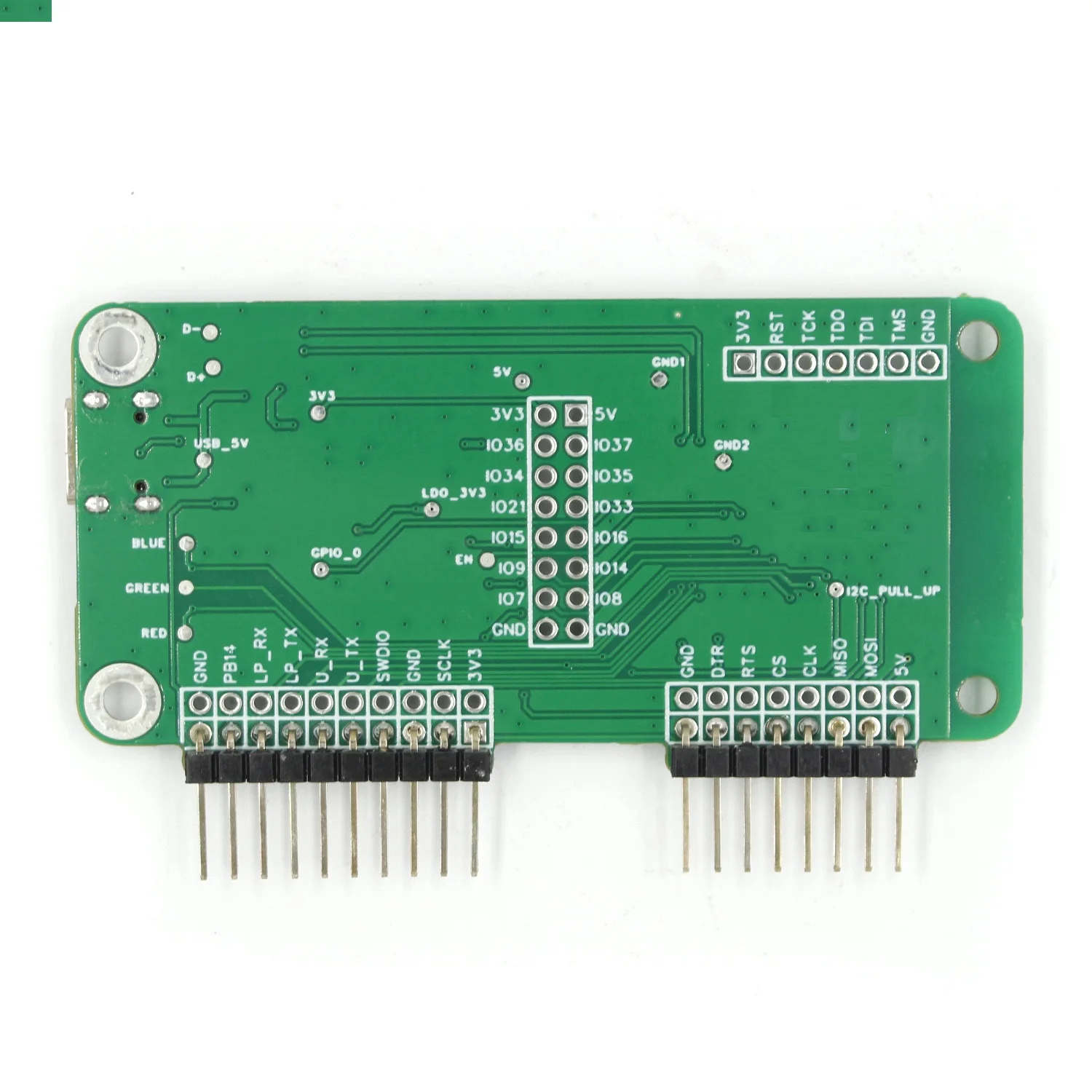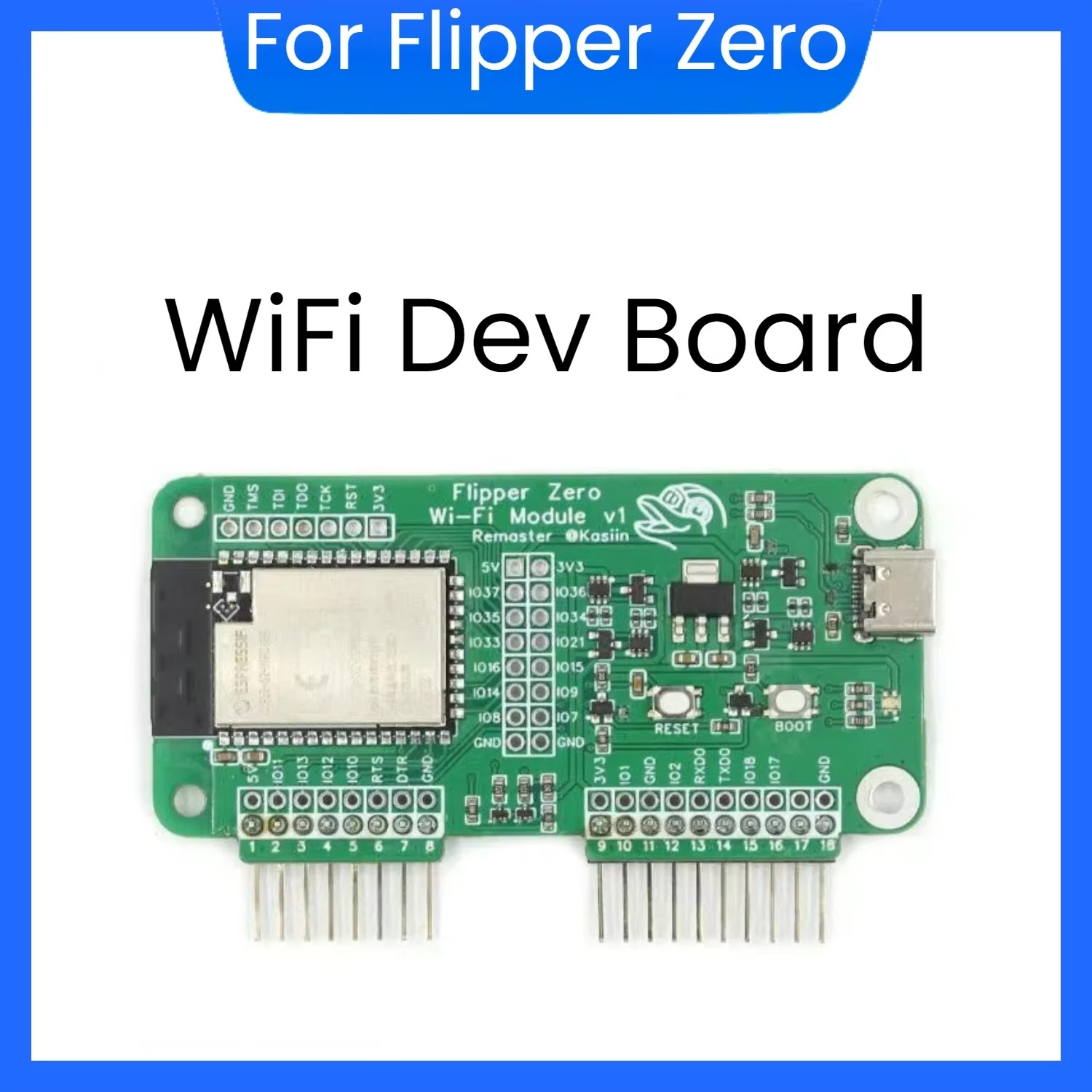WiFi Devboard for Flipper Zero.
Key Features of the Flipper Zero Development Board:
JTAG/SWD Debugging:
Provides direct access to the SWD (Serial Wire Debug) and JTAG ports for debugging the STM32 microcontroller on the Flipper Zero.
USB to UART Bridge:
Includes a USB-to-UART converter that allows direct communication between a computer and the Flipper Zero for debugging and serial logging.
Prototyping Area & GPIO Expansion:
Offers GPIO pins that can be used for attaching external sensors, modules, or custom hardware for experimentation.
SPI, I2C, and UART Breakout:
Enables communication with other microcontrollers or hardware via SPI, I2C, and UART protocols.
Power Management:
Can power the Flipper Zero via the development board’s USB connection.
Flasher for Firmware Development:
Can be used for flashing custom firmware directly onto the Flipper Zero.
Key Features of the Flipper Zero Development Board:
JTAG/SWD Debugging:
Provides direct access to the SWD (Serial Wire Debug) and JTAG ports for debugging the STM32 microcontroller on the Flipper Zero.
USB to UART Bridge:
Includes a USB-to-UART converter that allows direct communication between a computer and the Flipper Zero for debugging and serial logging.
Prototyping Area & GPIO Expansion:
Offers GPIO pins that can be used for attaching external sensors, modules, or custom hardware for experimentation.
SPI, I2C, and UART Breakout:
Enables communication with other microcontrollers or hardware via SPI, I2C, and UART protocols.
Power Management:
Can power the Flipper Zero via the development board’s USB connection.
Flasher for Firmware Development:
Can be used for flashing custom firmware directly onto the Flipper Zero.

Key Features of the Flipper Zero Development Board:
JTAG/SWD Debugging:
Provides direct access to the SWD (Serial Wire Debug) and JTAG ports for debugging the STM32 microcontroller on the Flipper Zero.
USB to UART Bridge:
Includes a USB-to-UART converter that allows direct communication between a computer and the Flipper Zero for debugging and serial logging.
Prototyping Area & GPIO Expansion:
Offers GPIO pins that can be used for attaching external sensors, modules, or custom hardware for experimentation.
SPI, I2C, and UART Breakout:
Enables communication with other microcontrollers or hardware via SPI, I2C, and UART protocols.
Power Management:
Can power the Flipper Zero via the development board’s USB connection.
Flasher for Firmware Development:
Can be used for flashing custom firmware directly onto the Flipper Zero.













